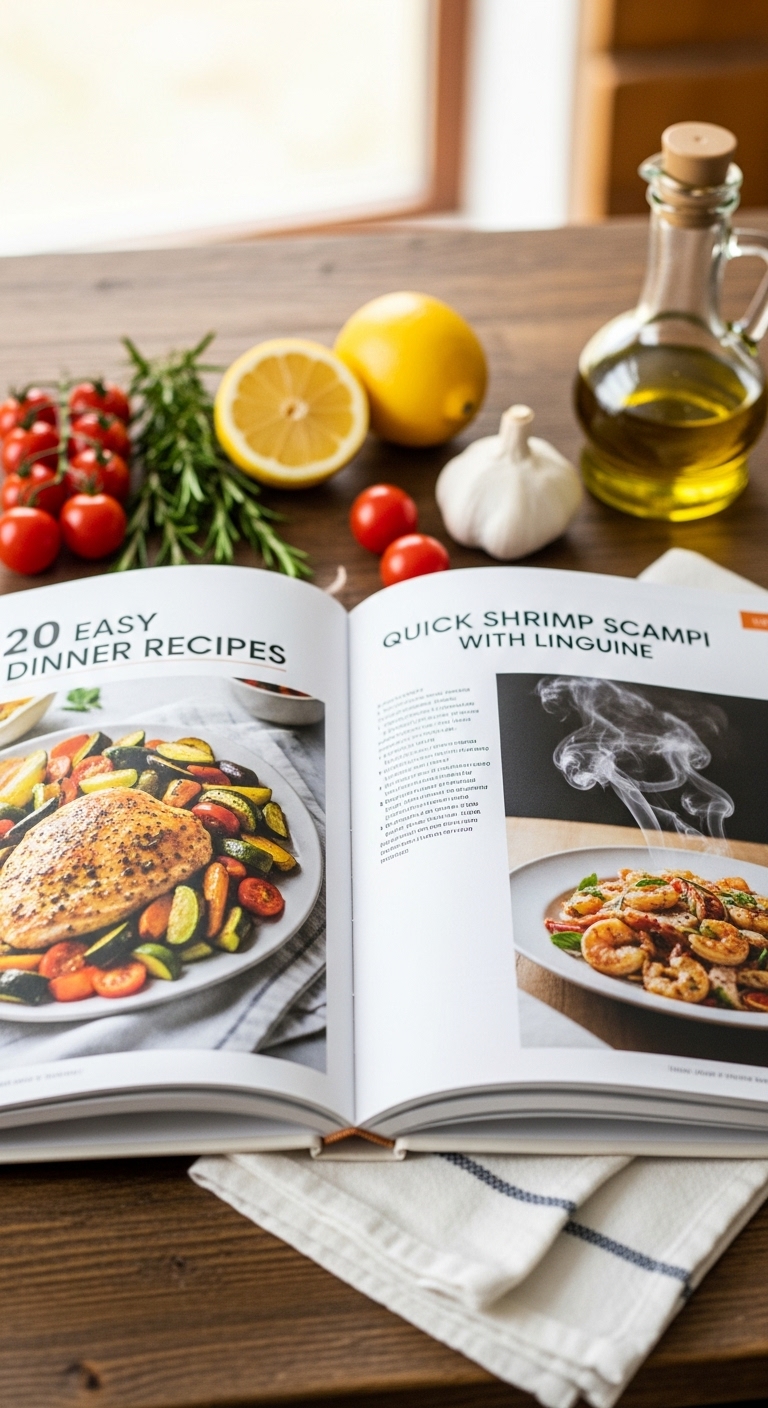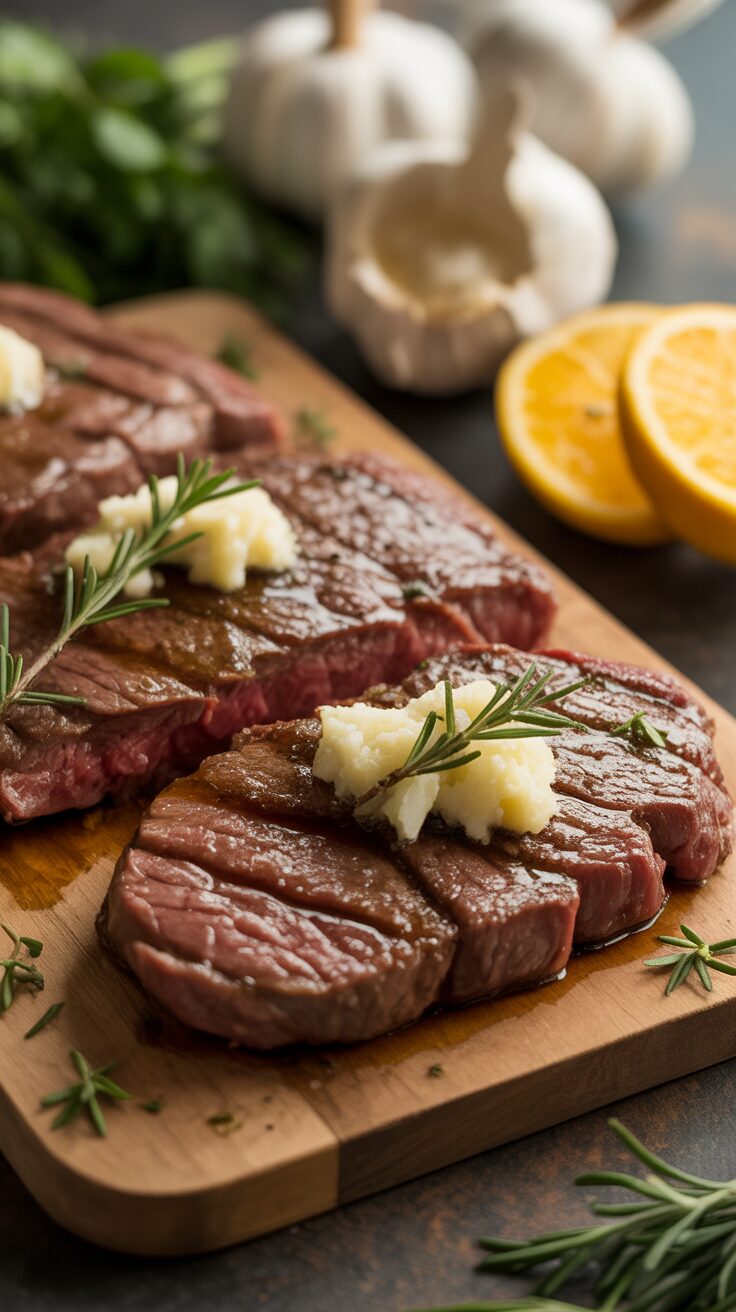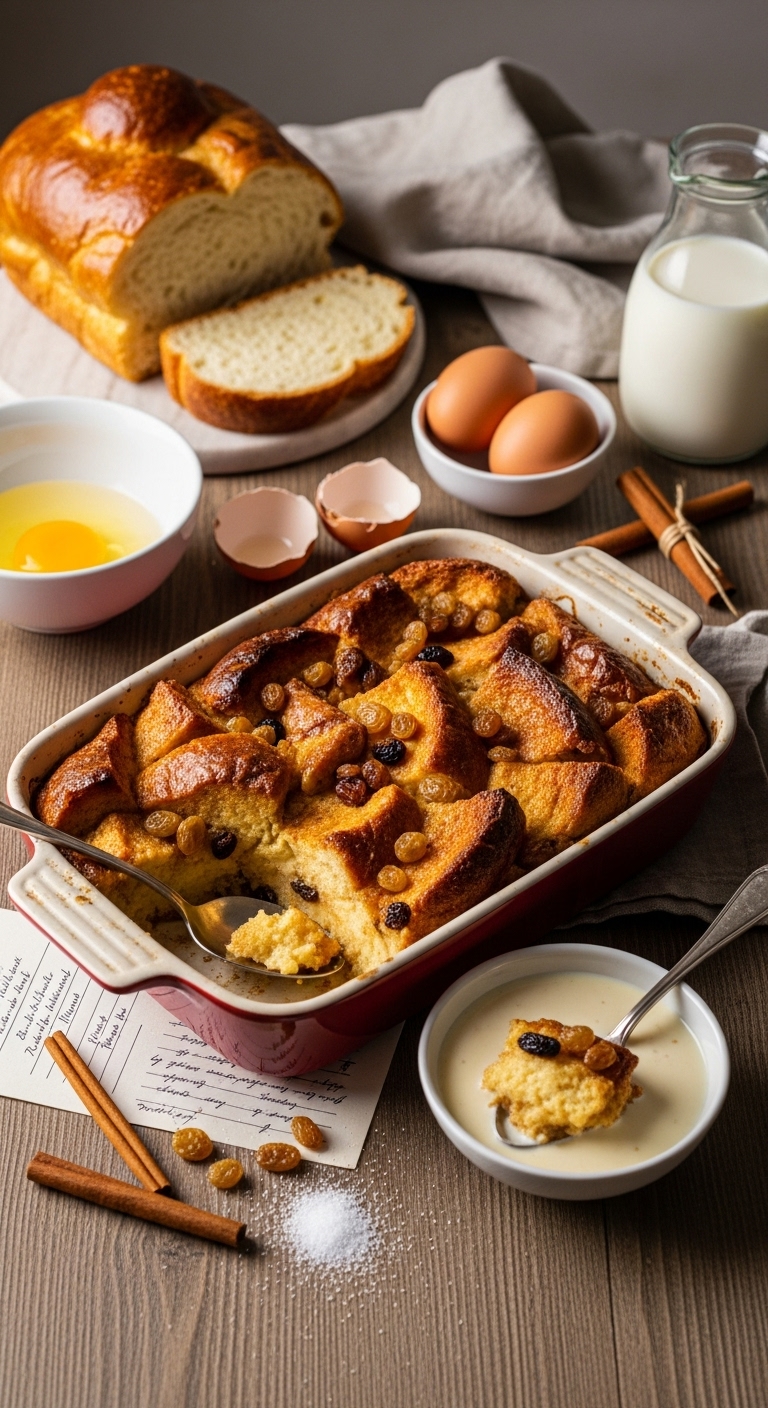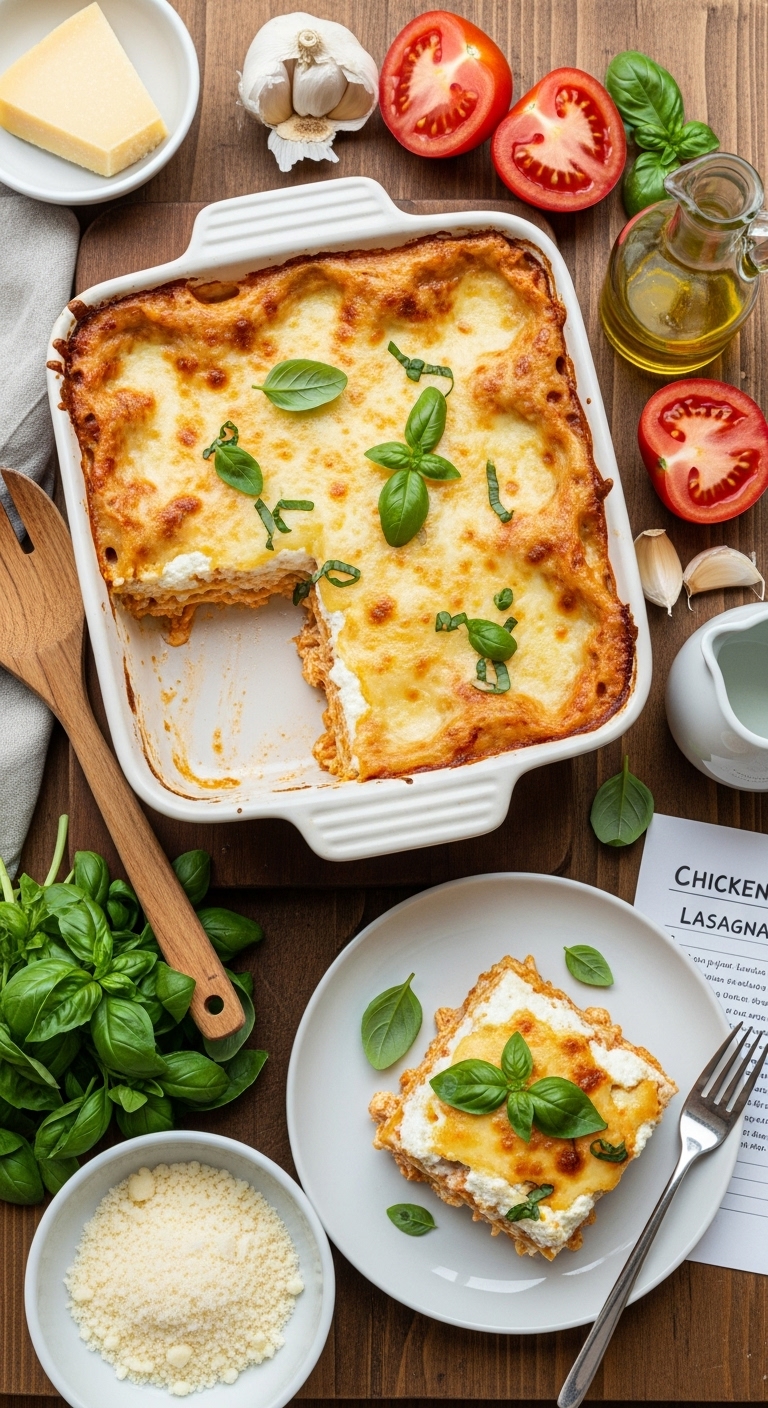Caesar Salad Recipe: The Ultimate Guide to a Classic, Creamy, and Crunchy Favorite
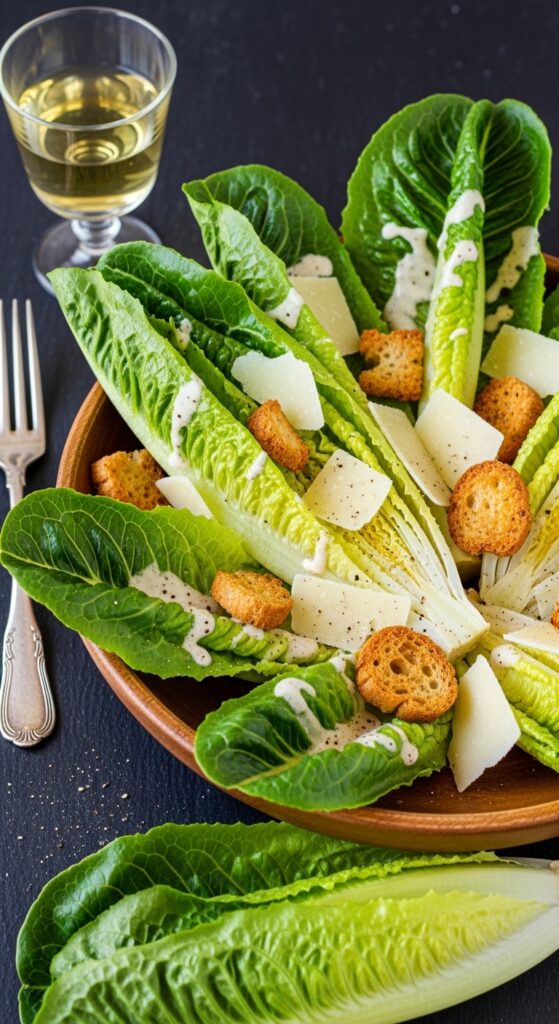
Few salads have stood the test of time quite like the Caesar salad. With its crisp romaine lettuce, creamy garlicky dressing, crunchy croutons, and a sprinkle of Parmesan cheese, it’s both simple and sophisticated. This timeless dish manages to be refreshing and indulgent at the same time — perfect for everything from a quick lunch to a dinner-party starter.
In this complete guide, you’ll learn how to make Caesar salad from scratch, including the dressing, croutons, and variations that suit any occasion. By the end, you’ll be crafting a salad that’s restaurant-quality but with your personal homemade touch.
Why Caesar Salad Is Always a Crowd Favorite
The Caesar salad has an irresistible balance of textures and flavors. The crisp lettuce, tangy dressing, and savory cheese create a combination that feels light yet deeply satisfying.
- It pairs well with nearly any main course — steak, chicken, or seafood.
- The homemade dressing is far superior to bottled versions.
- It’s a versatile dish that can be customized to your taste.
- Quick to make yet elegant enough for entertaining.
Pro Tip: Use fresh, crisp romaine lettuce and grate your own Parmesan — freshness is the key to the Caesar’s signature flavor.
A Quick History of Caesar Salad
This salad’s origins trace back to Tijuana, Mexico, in the 1920s, where Italian-American restaurateur Caesar Cardini invented it during a busy Fourth of July weekend. Low on supplies, he tossed together what he had — romaine lettuce, eggs, Parmesan, and croutons — and the rest is culinary history.
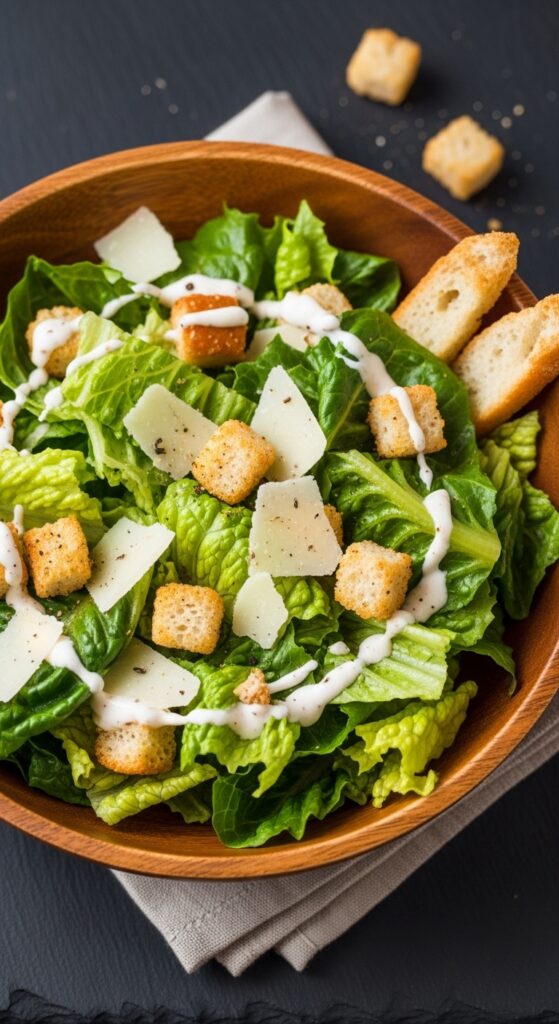
Over time, chefs added anchovies, garlic, and Worcestershire sauce to create the creamy, savory version we know today. It’s a story of simplicity and resourcefulness that became a global favorite.
Key Ingredients You’ll Need
| Ingredient | Purpose | Best Tip |
|---|---|---|
| Romaine lettuce | Crisp base of the salad | Wash and dry thoroughly for crunch |
| Croutons | Adds texture | Use day-old bread for best crispiness |
| Parmesan cheese | Salty umami flavor | Freshly grated is essential |
| Anchovies | Deep savory note | Mash into dressing for smoothness |
| Garlic | Adds punch | Fresh cloves only |
| Egg yolk | Creamy emulsion base | Pasteurized if preferred |
| Lemon juice | Brightens flavor | Fresh-squeezed only |
| Dijon mustard | Helps emulsify | Adds a subtle tang |
| Olive oil | Smooth texture | Use extra virgin for flavor depth |
| Worcestershire sauce | Enhances umami | Adds complexity |
Pro Tip: Anchovies are the secret to authentic flavor — don’t skip them. They blend into the dressing and create that rich, savory depth.
Step-by-Step Instructions
1. Prepare the Lettuce
Start with fresh romaine lettuce hearts. Separate the leaves, rinse thoroughly, and pat dry. To maintain crispness, chill the lettuce in the refrigerator for at least 15 minutes before assembling the salad.
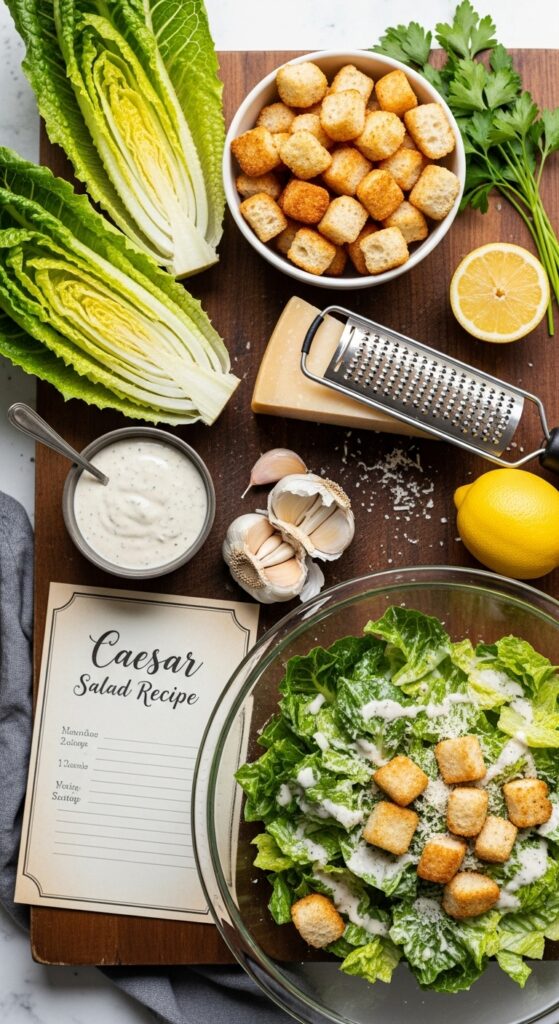
2. Make the Croutons
Cut day-old bread (like baguette or sourdough) into bite-sized cubes. Toss with olive oil, a pinch of salt, and minced garlic. Spread on a baking sheet and toast at 375°F (190°C) for 10–12 minutes, stirring halfway through, until golden and crunchy.
Pro Tip: For an herby twist, toss the croutons with a little dried oregano or parsley before baking.
3. Create the Caesar Dressing
In a large bowl, mash 2–3 anchovy fillets and 1 garlic clove into a paste using the back of a fork. Add one egg yolk, 1 teaspoon Dijon mustard, and 1 tablespoon lemon juice. Slowly drizzle in ½ cup olive oil while whisking constantly until the mixture thickens into a smooth emulsion.
Stir in 1 teaspoon Worcestershire sauce and ¼ cup grated Parmesan cheese. Season with salt and black pepper to taste.
Pro Tip: If you prefer a lighter dressing, substitute half of the olive oil with Greek yogurt for a creamy, tangy version.
4. Assemble the Salad
In a large mixing bowl, toss the chilled romaine leaves with half of the dressing to coat evenly. Add croutons and more Parmesan cheese. Drizzle the remaining dressing on top and give it a gentle toss before serving.
For extra flavor, top with freshly cracked black pepper and shaved Parmesan ribbons.
Variations to Try
Caesar salad is endlessly versatile — once you master the base, you can build countless variations.
1. Grilled Chicken Caesar Salad
Add warm grilled chicken slices for a protein-packed main course. It’s a classic lunch option that turns the salad into a full meal.
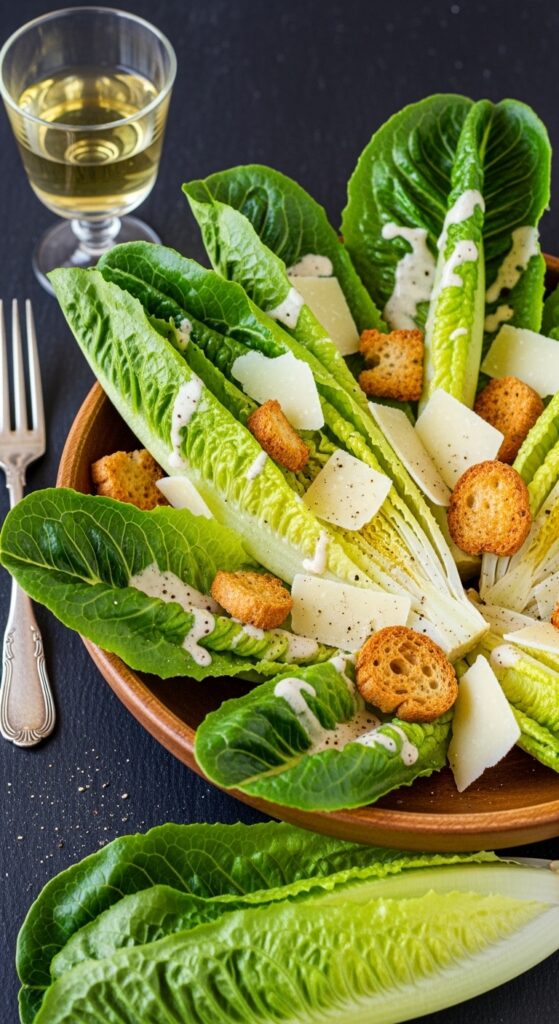
2. Kale Caesar Salad
Swap romaine for curly or lacinato kale. Massage the kale leaves with a bit of dressing first to soften them before tossing the rest.
3. Shrimp Caesar Salad
Pan-seared or grilled shrimp adds a light, summery twist — perfect for seafood lovers.
4. Avocado Caesar Salad
Add creamy avocado slices for a richer, smoother bite that pairs beautifully with the tangy dressing.
5. Vegan Caesar Salad
Replace anchovies with capers, the egg yolk with vegan mayo, and the Parmesan with nutritional yeast for a plant-based version that still packs flavor.
Common Mistakes and How to Avoid Them
| Mistake | Cause | Fix |
|---|---|---|
| Soggy lettuce | Not drying leaves | Use a salad spinner or paper towels |
| Watery dressing | Too much lemon juice or oil added too fast | Whisk slowly for emulsification |
| Bland flavor | Skipped anchovies or underseasoned dressing | Add salt and Worcestershire |
| Overly heavy salad | Too much dressing | Add in small batches and toss evenly |
| Stale croutons | Improper storage | Keep in airtight container up to 3 days |
Pro Tip: Always toss the salad right before serving to maintain the crisp texture of the lettuce and croutons.
How to Store and Prep Ahead
Caesar salad tastes best fresh, but with the right methods, you can prepare parts ahead.
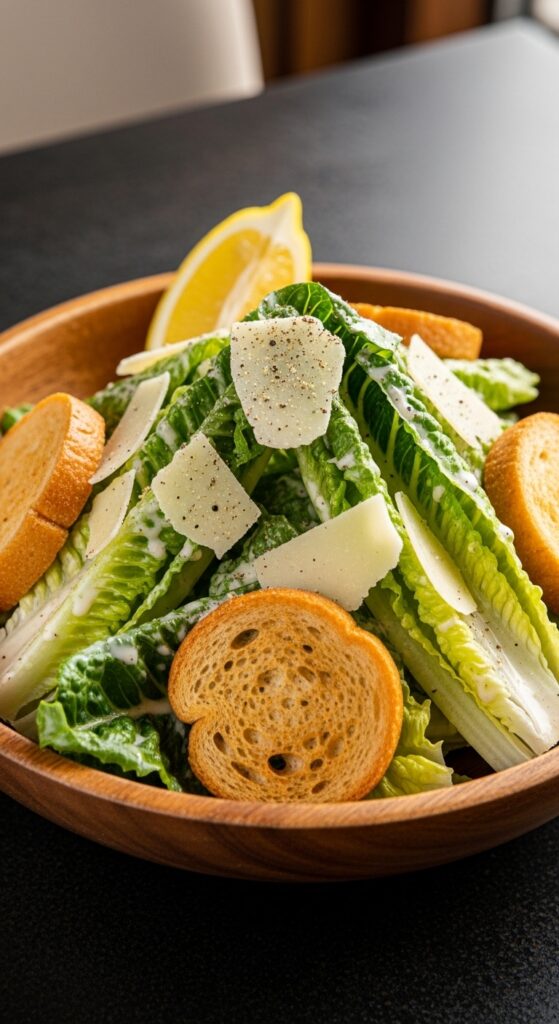
Make Ahead Components
- Croutons can be made 2–3 days in advance and stored airtight.
- Dressing lasts up to 3 days refrigerated in a sealed jar. Shake before use.
- Lettuce can be washed, dried, and stored in a paper towel–lined container for 24 hours.
Storing Leftovers
Once dressed, Caesar salad should be eaten immediately — the dressing will soften the lettuce quickly. However, leftover components can be kept separately for easy next-day assembly.
What to Serve with Caesar Salad
Caesar salad pairs beautifully with many dishes, from grilled meats to pasta.
- With pasta: Serve alongside spaghetti carbonara or baked ziti.
- With seafood: Complements grilled salmon or shrimp scampi perfectly.
- With sandwiches: A side Caesar elevates paninis or turkey melts.
- With soup: Pair with tomato basil or minestrone for a balanced meal.
Pro Tip: For a light summer meal, serve Caesar salad with chilled white wine or sparkling lemonade.
Nutritional Breakdown
| Serving | Calories | Protein | Fat | Carbs |
|---|---|---|---|---|
| 1 bowl (with dressing and croutons) | ~320 | 9g | 27g | 10g |
These numbers vary depending on ingredients and portion size, but this salad is relatively balanced, offering healthy fats and fiber.
Fun Facts About Caesar Salad
- Traditional Caesar dressing was made tableside in many fine dining restaurants.
- Despite its Italian name, it was born in Mexico and became famous in the U.S.
- Some versions use coddled eggs instead of raw yolks for extra richness.
- The original did not include anchovies — those were added later for flavor depth.
Pro Tip: If serving at a dinner party, toss the salad tableside for that elegant, old-school presentation.
Final Thoughts
The Caesar salad may be simple in ingredients, but it’s a masterpiece of flavor and texture. When made right — with fresh romaine, crispy croutons, real Parmesan, and a homemade dressing — it’s both timeless and unforgettable.
This recipe celebrates everything that makes the Caesar special: the crunch, the creaminess, and the balance of bold and bright flavors. Once you try making it from scratch, you’ll never go back to bottled dressing or bagged kits again.
Whether served as a side dish or a full meal, Caesar salad fits every table, from casual family dinners to elegant gatherings. Fresh, satisfying, and endlessly adaptable — it’s a true kitchen classic worth mastering.

